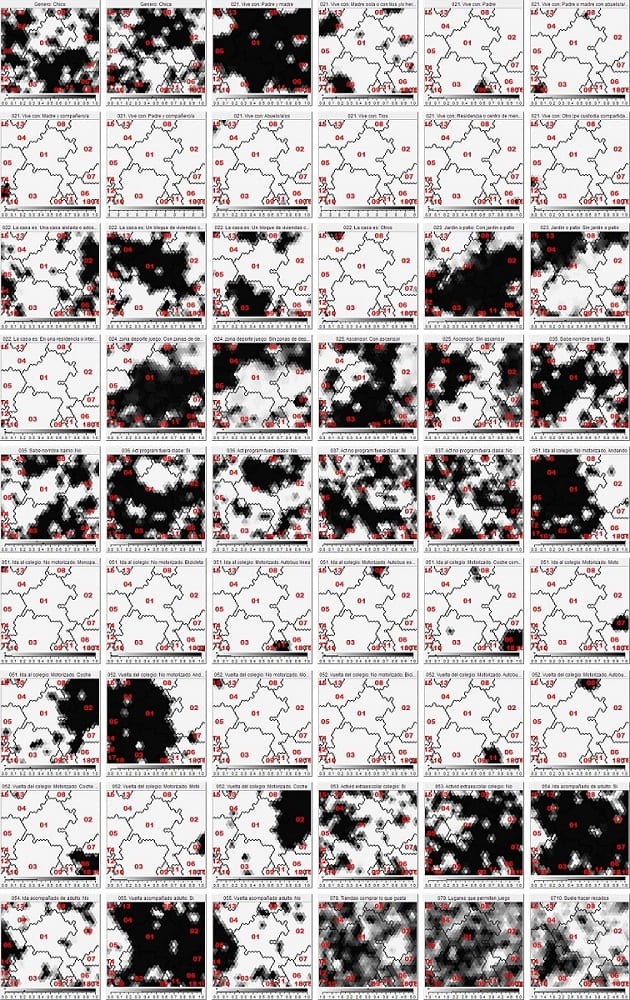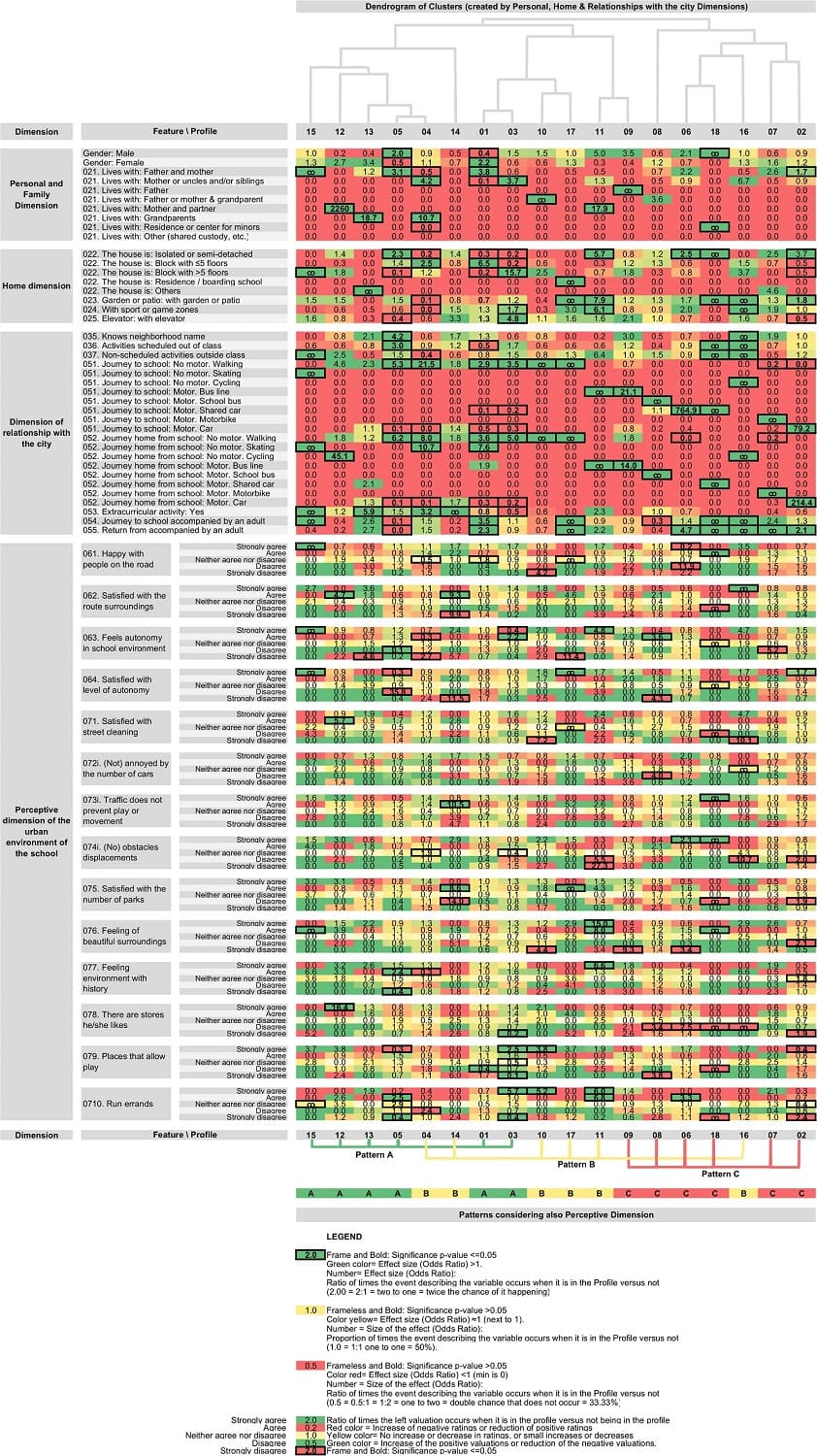

We carried out the SOM analysis previously performed using 40 of the personal and family, residential and relationship with the environment dimensions and the Odds Ratio (OR) analysis as a measure of effect size, generating an iterative process of determining the number of clusters in which 18 profiles were obtained, lo que permitió incorporar matices relevantes en la evaluación de la encuesta.
This generated a clustering in profiles visually represented in the following map:

From this map we were in turn able to obtain the following heat map, which shows in a range of colors from green to red (from positive to negative effect) the effect of each variable and its explanatory capacity to belong to each profile based on its characteristics.
The map shows different groups of children with similar sociodemographic characteristics and opinions of the environment within each group and different between groups, which allows us to analyze and correlate the influence of sociodemographic characteristics with the perception of the environment:

In other minority profiles there are other modes of displacement: in the profile 7 utilizan la moto y valoran negativamente la autonomía, en el profile 8 use the school bus, and positively value the number of cars, obstacles in the city, number of parks, the history of the city and places for play, presenting a high level of autonomy, although negatively valued.
On the other hand, the Profile 9 The child is usually: a child who travels by bus, appreciating his autonomy, not enjoying the people or the environment of the route, annoyed by the traffic, not appreciating that it is a beautiful environment, nor appreciating the stores.
After that, we were able to conclude that there is a relationship between children's modes of travel, family structure and the degree of autonomy they enjoy in relation to their perception of the urban environment near their schools. This may give clues about the effect on children's perception of the city of the reduction of motorized traffic and the actions that should be taken on territorial and urban planning, oriented to walkability, pedestrian and sustainability
This study in which we analyze surveys with Artificial Intelligence to help decision making is very useful for many of our projects, especially for those in the humanitarian field.
This is because the methodology studied allows for the differentiation and grouping of people according to their degree of vulnerability and the need and urgency of intervention by humanitarian actors in developing countries such as Honduras, Nicaragua, Guatemala or Venezuela, which frequently suffer food crises due to natural disasters such as hurricanes, earthquakes or volcanic eruptions.








Correo electrónico: info@gis4tech.com
